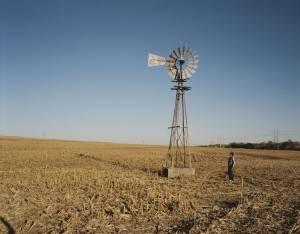“I found what I was looking for in places that most people went out of their way to avoid… To see the landscape as a tissue of relationships is a natural consequence of the assumption that landscape is a human creation, even when the only action involved is the act of perception. Space is given its character, place comes into being, by the way human presence is manifested within it…What lingers in the memory, though is the image of a solitary, upright form in the middle distance of an endless plain”
—Frank Gohlke
These pictures explore the geography and culture of the American west, concentrating on the human imprint on the environment. Working with a large format camera and inspired by the spirit of the nineteenth-century western photographic expeditions, I photograph the fascinating and melancholy intersection of the natural and built worlds, often times in the middle of nowhere. I feel the intangible connections to American history, leaving faint but indelible marks. My appraisal of a dusty road or a neglected farmstead, a long view or an open range describes the complexity of desire around the narrative of the American western landscape.
To me, the windmill is a symbol, an icon and an enigmatic representation of the first settlers in the western landscape. This particular vertical “creates an ontological distinction on the plains, creating a place where the work of human hands inserts a new meaning. It is therefore, a good place to find drama and poetry. The windmills function is alchemy, to take a powerful energy source, the wind and turn it into water.” In our modern day its purpose has been diminished, it quietly stands guard like a forgotton sentry in the landscape, another relic of our past and relationship to the frontier.
—John Carter

